Natural Hair Treatments and Their Advantages
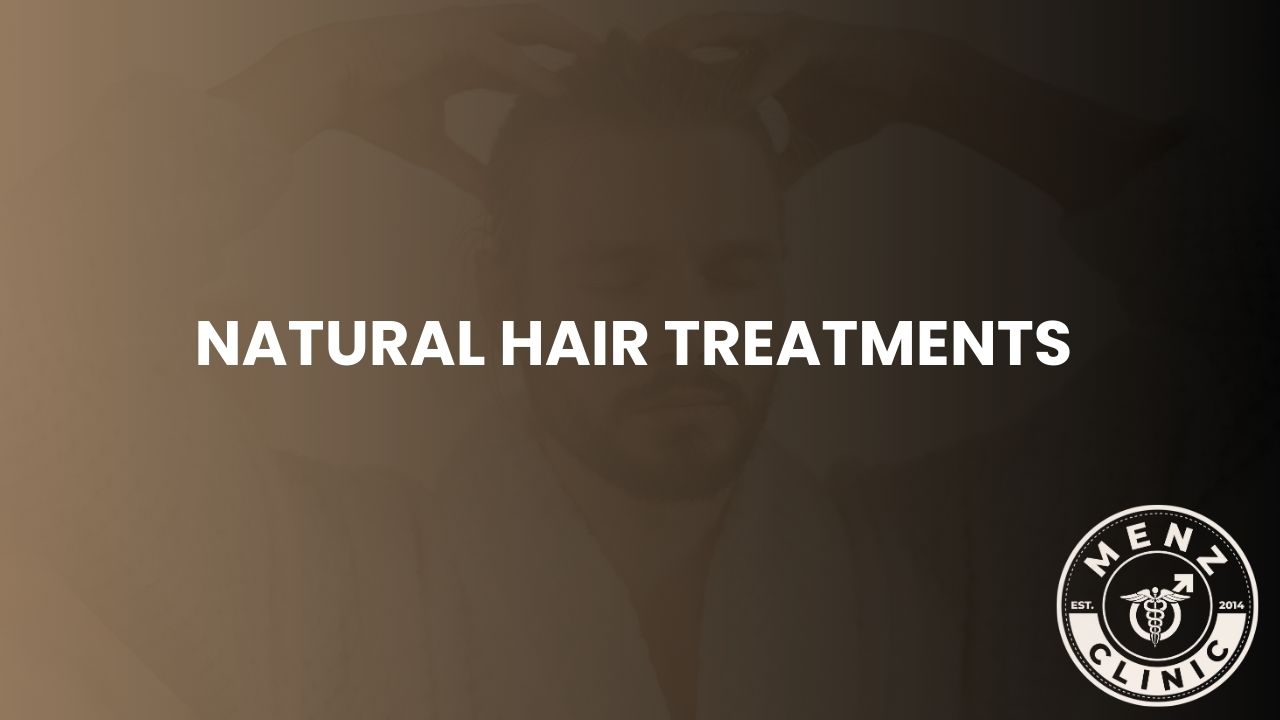
Following natural hair treatments is a great alternative to professional hair treatments. More than just a beauty trend, turning to natural hair care is a good choice. Natural hair treatments improve scalp health, offer chemical-free nourishment, and promote hair longevity over time. This guide on the top 7 natural hair treatments and the particular advantages they offer for every type of hair is a must-read. Go through it and see how you can transform your hair just by using some natural products from your kitchen. The Top 7 Natural Hair Treatments Find the top and highly potent natural hair treatments here: 1. Coconut oil: For deep nourishment and damage repair 2. Aloe Vera: Reducing Scalp dryness and improving Hair Hydration 3. Onions Juice: Natural Stimulant for Hair Growth People often avoid onion juice for hair application because of its powerful smell, onion juice is a good organic solution for stimulating hair development. Key Advantages: Stimulates Blood Flow: Rich in sulfur, onion juice improves scalp circulation and therefore supports oxygen and nutrient supply to hair follicles. Regular usage could fill in bald spots and reverse hair loss by stimulating inactive follicles. Strengthens Hair Roots: Bolsters the structural strength of the hair shaft, resulting in reduced fall-out. Its antibacterial qualities help to keep a clean scalp environment. Improves Density: Over time, leads to more voluminous hair. 4. Avocado-Banana Mask: Frizz Management and Elasticity Enhancement Though often found in do-it-yourself hair treatments, the real value of avocado and banana lies in their ability to control frizz and recover elasticity. Principal advantages: Hydrating Dry Hair: Both components are rich in natural oils and potassium, which deeply hydrates and moistens and provide natural hair treatments. Promotes elasticity, hence reducing hair damage and snapping by encouraging suppleness. Smooths the cuticle layer to manage frizz; helps with flyaway. Balancing protein restores: Offers a natural protein therapy especially suited for chemical processed or heat-damaged hair. Leaves without further styling goods leave hair soft and easy to manage. 5. Rice Water: Strength, Shine, Length Preservation Rice water is an age-old hair care technique that offers shine and strength; it was a once-secret of Japanese and Chinese beauty routines. Key Benefits: Protein-Enriched Strengthening: Packed with amino acids to mend broken fibers. Reflecting light and providing hair a naturally glossy appearance: smooths the cuticle. By moisturizing hair strands, helps stop breakage and knots. Supports Length Maintenance: Strengthening fibers stops breakage and split ends, leting hair to grow over time. Scalp Soother – Inositol found in rice water supports regrowth in scalp cells. 6. Olive oil protein power from egg yolk for thin hair Together, they create a natural protein mask which helps to keep essential moisture and restore damaged hair. Key Advantages: Eggs are rich in biotin and keratin, fundamental proteins producing strong, elastic hair, hence reinforcing hair shaft. Prevents Breakage: Strengthens strands from the inside out to lessen snapping while brushing or styling. Moisture Locks: Functioning as a sealant, olive oil helps to preserve hair shaft moisture. Revives Busted Hair: Adds volume and bounce by energizing lifeless, fragile tresses. Reducing split ends: Filling in thin areas along the hair shaft helps to reduce exposed damage. 7. Scalp detox and shine enhancer: apple cider vinegar For both the hair and the scalp, apple cider vinegar (ACV) offers a gentle means of clearing and detoxifying. Returns your hair and scalp to their normal pH, thus reducing flakiness or greasiness. This helps to get rid of hard water marks, extra oils, and product remains. Flattening the cuticle layer makes hair seem shinier and feel softer. It controls dandruff: its antibacterial and antifungal properties reduce flaking and itching. Leaves the hair feeling much more bouncy and cleaner after treatment; enhances volume and lightness. Why Are Natural Hair Treatments Recommended? Nature is completely pure, organic and free of chemicals. Your hair being a protein is very fragile and sensitive towards inorganic products. If you replace your hair care with some naturally available extracts, you will be at ease considering the fact that there are no chances of damage. Moreover, naturally occurring products have the essential vitamins and nutrients that are vital for the nourishment and provide natural hair treatment. However, there are instances when natural hair treatments do not produce the results as desired. Therefore one needs to attain professional help. Last ideas: Pick Nature for Stronger Hair More than just simple home remedies, natural hair treatments make up an essential aspect of a complete hair care program. Using chemical-free alternatives helps you to support sustainable beauty methods as well as personal health. These organic treatments deal with underlying problems be they scalp inflammation, hair loss, or frizz control rather than covering symptoms. Include them into your weekly hair care regimen, and you should find a more healthy scalp as well as more robust fibers.
Health Tips For Men For Best Sexual Experience
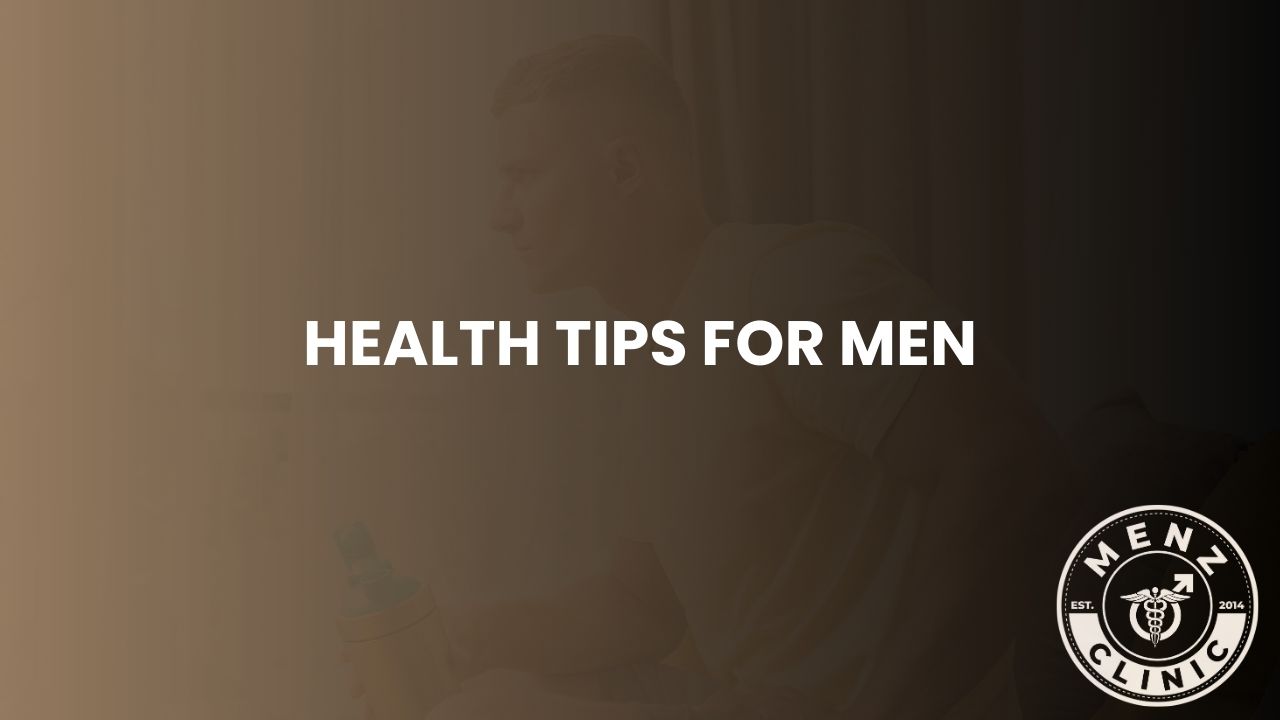
Health tips for men when advised by experts improves the sexual health of men. For guys of any age, maintaining ideal health is important because it promotes a balanced lifestyle, lowers risk factors, and reduces the possibilities of medical emergencies. Find the top 13 health tips for men for best sexual experience in this blog compiled by experts. Top 13 Health Tips for Men It is not just about exploring the health tips for men, but rather following them religiously. Here is a take from experts: 1. Visit your healthcare professional Regular medical exams for men are very important. Many men forget that it can lead to unnoticed health problems. Establishing a good relationship with a doctor enables early spotting of possible health issues and provides health tips for men for lifestyle improvements. Moreover, a health care expert will diagnose any disease before it can start showing worse reactions. 2. Get your routine tests done timely Whether you have recently chosen a physician or have one you see regularly for health tips for men, make regular visits a priority and take the tests seriously. Stopping health problems before they arise depends much on yearly checkups. Avoid rescheduling or canceling the tests. Discuss the results during the consultations that include vitamins, diet, weight control, cholesterol levels, blood pressure, supplements, and dietary choices. Regular medical appointments serve to keep health proactively maintained and keep these words as a health tips for men. 3. Follow the doctor’s instructions Your lifestyle and health are well understood by doctors. During regular visits, follow their direction and make required alterations. Instead of ignoring seeming symptoms, use these appointments to educate yourself on health tips for men’s issues and openly talk about them. Even in cases of present health issues, timely treatments and precise diagnoses help to lead a more healthy life. It is considered as the most important in health tips for men. 4. Keep a Well-Balanced Diet Your physical performance is much influenced by your eating habits. Adding lots of fruits, vegetables, whole grains, and fiber while cutting down on processed foods, sugars, and too many carbohydrates will help to stop diabetes, heart disease, and certain forms of cancer. A proper diet as well helps control blood pressure and reduce belly fat. 5. Add Standard Physical Activity Levels Regular physical activity improves both mental and physical condition. Strive for at least 30 minutes of activity daily. Something as simple as taking evening walks could qualify for an efficient lifestyle alteration. Improving motivation is possible by keeping track of where you stand. Begin with manageable schedules and slowly raise duration and effort. Including flexibility exercises, aerobic exercises, and strength training can help to maintain muscle strength, improve cardiovascular health, and preserve flexibility and other health tips for men. 6. Get enough sleep first Overall health depends critically on having seven to nine hours of sleep every night. Taking extra caffeine to avoid sleep can start damaging to health. Giving enough time for rest revamps the mind as well the body. 7.Get help for mental issues Discuss possible warning indicators with your doctor if there is a family history of mental disease, substance abuse, or suicidal tendencies. Achieving an optimistic perspective depends on both mental and bodily health. Getting assistance when needed is a first important component of improving mental wellbeing. 8. Keep a balanced weight Good weight control helps to reduce the risks of strokes, cardiovascular disease, and heart attacks. Your weight also contributes to problems with sexual intercourse. Do physical exercise and follow mindful eating methods to relieve the pressure on the heart. The assessment and monitoring of weight status is helped by use of tools like Body Mass Index (BMI) and waist circumference measurements. Follow them and maintain your ideal weight. 9. Keep yourself away from risky habits Stopping yourself from things that damage health is as important as making good life changes. Heart disease and cancer linked to smoking and vaping rank among the most prominent reasons . Among all the ill habits, excessive alcoholism can cause heart problems and cancer. Unprotected intercourse or multiple partners increases the chance of sexually transmitted diseases. Dealing with these issues is absolutely essential to general well-being. 10. Be proactive about your sexual health Problems with erections and erectile dysfunction could indicate underlying medical issues. Psychological problems, bodily issues such as heavy drinking, or medical problems might all contribute to such problems. Seeing a medical provider helps one to identify and tackle these problems. 11. Prioritize your prostate health Increased frequency or reduced flow of urine may be signs of an enlarged prostate gland, which can also affect older males. Let your doctor know; if these worries arise, discuss lifestyle changes including regular exercise, consistent fluid consumption all day, and periodic bathroom breaks. 12. Customize Health Practices by Age Maintaining a healthy lifestyle is absolutely vital at every age. Younger men may engage more in strength training, but older men over fifty may focus on low-impact workouts. Men in their 20s should check for testicular cancer and check cholesterol levels. However, those 50 or older should think about thyroid function, colon cancer, diabetes, and heart disease screenings and keep taking health tips for men from there doctor. 13. Take part in Entertaining Events While concentrating on good habits, daily activities that bring personal satisfaction should also be scheduled. Engage in hobbies such as reading audiobooks, yoga practice, or meditation to enhance mental health and help you recover ill habits and also improve relationships with your partner. Using these health tips for men can greatly improve men’s health and help them to have a more balanced, satisfying life. When To See A Sexual Expert? Visit Your Healthcare Expert Today for Health Tips for Men Following the health tips for me alone will not help. You need to visit your healthcare provider for analysis of your body. At Menz Clinic, we have sexual experts guided by the senior medical doctor, who possess vast knowledge in men’s vitality. Book
Hard Erection Foods: The Best Diet for Stronger and Longer-Lasting Performance

Introduction If you are unable to attain an erection, then you risk lowering your confidence and ability to enjoy life. Men’s health can be measured by frequency and hardness of erections but age is also a factor of erectile dysfunction. Diet has a big impact on erection quality Hard Erection Foods. The right diet and hard erection foods can improve blood flow, raise testosterone levels and even improve general sexual performance. If you want to know foods that can help you maintain your erection longer, go over our guide which will help with food selection and tell you the best way to increase stamina or change its foramina naturally. How Diet Affects Erections? A hard penis needs good circulation, strong nerves, and ample testosterone, and dietary changes like hard erection foods can help improve all of those things. Eating foods rich in important nutrients like vitamins, minerals, and antioxidants helps keep your arteries flexible to make nitric oxide, which is an essential component of good circulation. On the contrary, poor eating habits can lead to a bad erection, obesity, and even impotence. To increase your sexual performance without relying on drugs and artificial stimulants, opt for the right diet. 15 Best Hard Erection Foods 1. Watermelon Watermelon this amino acid helps to relax blood vessels and promote circulation. It thus has the same effects on men as Viagra, only it’s natural. That includes better erections (please note that it is an aphrodisiac that goes both ways and can be taken by both partners). Additionally, watermelon is a good source of antioxidants and also helps to moisturize your body, keeping you healthy and can be count as hard erection food. 2. Dark Chocolate Chocolate laced in the dark does not make you fat and benefits you more. Much attention has been paid to blood circulation level or blood pressure points- even if they get too low. The penis gets enough blood, and this creates a firmer, more durable erection. Opt for chocolate with at least 70% cocoa to maximize its benefits. 3. Leafy Green Vegetables Nitrates, found in green leafy vegetables like spinach and cabbage as well as other vegetables such as radishes known as hard erection foods, Help expand blood vessels and improve circulation at the same time, this leads to a strengthening of the pre-penile venous influx. And in addition, with testosterone production supported, which increases libido it also helps improve agility. 4. Oysters and Shellfish Oysters are well known hard erection food for their aphrodisiac properties due to high zinc content. Zinc plays a crucial role in testosterone production and sperm quality. Regular consumption of oysters and selfishness can improve libido, erectile strength and overall reproductive health. 5. Pomegranates Pomegranates are loaded with antioxidants that fight oxidative stress and improve heart health. Studies have shown that pomegranate juice increases nitric oxide levels, leading to better blood flow and stronger erection. Drinking a glass of pomegranate juice as a hard erection food daily can help maintain sexual health naturally. 6. Nuts and Seeds Almonds, walnuts and pumpkin seeds are rich in l-arginine. This is an amino acid that enhances the production of nitric oxide. This helps to promote circulation. These nuts also contain zinc to increase testosterone levels and overall sexual function. They are hard erection foods and rich in fibrous fats as well as cholesterol and coenzyme Q10. 7. Fatty Fish Salmon, mackerel and sardines deliver ample omega-3 fatty acids to your body which keeps the heart healthy and blood flowing. Better heart function means better erections and sexual performance. Omega-3s also relieve stress and anxiety, two mood states that can dampen sex desire and can be use as hard erection food. 8. Garlic Garlic has a substance called allicin that’s able to improve the blood flow, reduce deposits of plaque in all types of arteries uses as hard erection food. Regularly eating garlic improves blood flow to the penis which gives a harder erection according to reports on how medical research revealed that old classic folk remedy worked even without taking Viagra. For best results, consume garlic raw or cooked with your meals daily. 9. Avocados Besides monounsaturated fatty acids and antioxidants, which are good for your heart, avocados contain fiber, fat-soluble vitamins and lots of potassium–all of this helps with heart health. They also promote better sexual function in men by increasing the level of male hormones, libido and erectile strength. Adding them to your diet as a hard erection food is therefore good for both sexuality and health. 10. Bananas Bananas are filled with potassium, which helps to control high blood pressure and make your blood flow round. The bromelain in bananas is known to increase male testosterone production as well. Therefore, for a healthy erection, it is essential to eat a diet rich in potassium. 11. Egg Eggs are a good source of vitamins B5 and B6. Both can help to balance hormone levels and beat stress. If you are suffering from high levels of stress, it will have a negative effect on your sex life. Eating eggs regularly can help to maintain a healthy libido and produce strong erections. 12. Gainger Ginger has been used for centuries to improve circulation and increase sexual desire. It contains compounds that stimulate blood flow and increase levels of testosterone. Drinking ginger tea, introducing ginger into your food in other ways, all are naturally good aids to sexual performance. 13. Chili Peppers Giving chili peppers a spicy kick, capsaicin can increase blood flow and increase the level of testosterone in the body. In addition, eating spicy foods triggers the release of endorphins, making you feel more energetic and self-confident in bed. 14. Green Tea Green tea is rich in catechins, These are the hard erection foods which help improve the quality of blood vessels and so increase circulation. As an added bonus, making green tea a part of your daily routine can help DEBT erections and also protect your overall heart health. 15. Beets Beetroots are
Benefits of Ejaculation: Health, Wellness, and Science-Backed Advantages

Ejaculation is a natural function of the human body Benefits of Ejaculation, it’s not only very important for reproductive health but also has the added bonus that a man’s outlook on life will be different once he has done so. Scientific research has found that frequent ejaculation can have a number of positive health effects, such as improving mental health, lowering stress levels and promoting the health of your prostate. The following articles will introduce to you many good benefits of ejaculation; we are expecting where it will take us in terms of physical and mental improvement as well as your sexual life being thoroughly healthy all around. Top 10 Benefits of Ejaculation 1. Improves Prostate Health Ejaculating also has positive effects on prostate condition. According to experiments, regular ejaculation can maintain the prostate free from toxins and harmful substances which cause such ailments as prostatitis and cancer studies indicate. One study, published in the Journal of the American Medical Association (JAMA), determined that men who ejaculated more than 21 times per month had a lower risk of getting prostate cancer than those who did not ejaculate so frequently and can be count as a benefits of ejaculation. The reason, it appears, is that ejaculation can clear carcinogenic substances away from the prostate gland and that must be healthier than letting them become concentrated there. 2. Reduces Stress and Enhances Mood Endorphins dopamine and oxytocin are released by ejaculation, and these are hormones that bring relaxation, happiness and emotional balance. Benefits of ejaculation are on depression too. These chemicals serve naturally to relieve stress; they ease nervousness and help relax anxious minds. Many men feel a sense of relaxation and better mood after ejaculation due to the release of these feel-good hormones. This is very similar to the results obtained from physical exercise, meditation or other methods of reducing stress are benefits of ejaculation. 3. Boosts Immune System Function One study showed that ejaculation actually improves the immune system. Researchers now say sexual activity including a man ejaculating– seems to boost levels of immunoglobulin A (IgA), which is an antibody that plays a critical role in the body’s ability to resist infection. Therefore a healthy sex life along with regular ejaculation might well mean increased resistance to common illnesses ranging from the cold to influenza. 4. Enhances Sleep Quality Another important benefits of ejaculation is that it can improve the quality of sleep it brings. Many men feel a sense of relaxation and drowsiness after ejaculation, this is thanks to the release of hormones such as prolactin and serotonin. These hormones help the body relax and enjoy deeper, more restful sleep. Quality sleep means a lot to public health as this is essential for mental focus, emotional well-being and overall physical health. 5. Supports Heart Health Cardiovascular health is an area where ejaculation may benefit even more according to recent studies. The research shows that men who engage in regular sexual activity, including ejaculation, are at lower risk of heart disease. Doing sex works like a kind of physical exercise, helps maintain normal blood functioning, reduces blood pressure; keeps hearts in good working order. In that sense, the avoided stress and anxiety caused by ejaculation will also indirectly benefit cardiovascular health and it is in the favor of benefits of ejaculation. 6. Enhances Sperm Quality and Fertility Men who masturbate frequently improve their sperm quality and increase their overall fertility. Ejaculation regularly means that active, thin sperm means greater probability for conception. Another way of putting it is, avoiding long delays in ejaculation helps preserve energy, serving sperm that is still vigorous would surely return as good or better for the next generation than its exhausted counterparts. 7. Reduces Pain and Discomfort Some studies have confirmed that orgasm reduces natural pain. Also the fact that endorphins become serialized at ejaculation additionally concerns not just headaches, migraines and muscle pain but also greatly alters our introduction to natural painkillers. If scientists could reproduce this phenomenon. Sexual activity and orgasm may offer another line of pain control. For example, recent research has documented that these homely biological functions temporarily numb chronic pain even as they relieve the hurt in the here and now. 8. Improves Confidence and Self-Esteem A man who ejaculates regularly and leads a life of ease will be brimming with confidence, looking down his nose at anyone but the most virtuous amongst men. Often the result of sex is a happier mood and better mood health. For example, if a person is sexually satisfied over a long period of time, That self-image is reflected daily in healthy relationships with others. No wonder the newspaper business is so competitive; everybody wants to get his name and picture in print. Many people notice that once men have experienced sexual satisfaction, they feel much more content among their fellow men and at work, with the result that the world as a whole seems rather bright. 9. Reduces the Risk of Erectile Dysfunction (ED) Regular sex and ejaculation help keep healthy blood flow around your genitals. In turn, this will help sustain your erectile function. As it happens these days while people are still kicking a lot of respect is being paid to benefits of ejaculation accruing from sending a man’s arousal time over time up against its very limits back. This results in that as men grow older they will be less likely, The risk of developing erectile dysfunction (ED) is cut by taking a preventative approach and going to bed erect at night. 10. Increases Longevity and Overall Well-Being Some studies demonstrate that men who ejaculate regularly actually live longer and are healthier overall. Long-term health is an accumulation of small factors. Less stress, a healthy heart and good sleep not only make for better health but also help you live longer. Becoming more immune that is what life really means. Having sex times per week is one of the key factors contributing to good health throughout your life.
Vitamins for Erection: Boost Your Performance Naturally
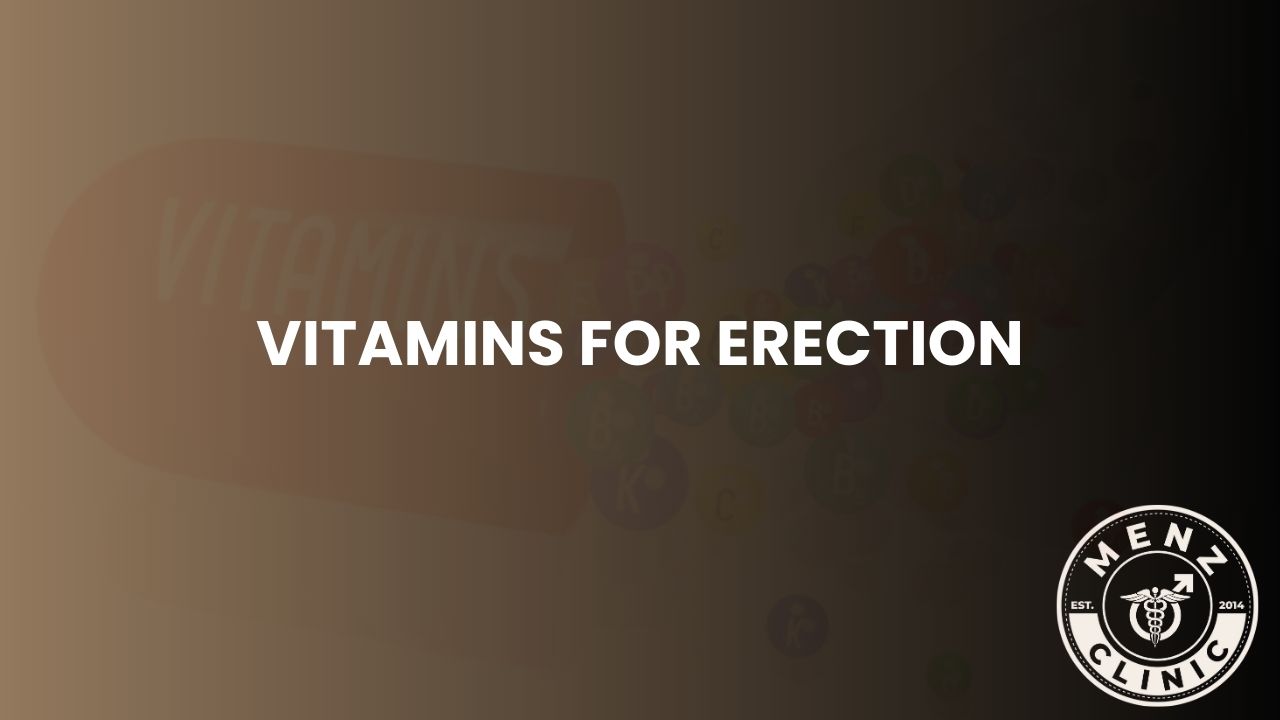
Introduction Erectile dysfunction (ED) is a common concern for millions of men around the world. Stress, poor nutrition and underlying health problems all have a role in this condition, nutrition is key to good performance in the bedroom. Vitamins for erection are needed to help increase hormone production, maintain blood flow and support overall healthy sexual function. It’s time now that we took a look at some of the best vitamins here. In this article, we will go over some of the greatest vitamins for erection, how they work and where to put them into your diet so as to optimize performance and stamina. 7 Best Vitamins for Erection 1. Vitamin D Vitamin D, often referred to as the “sunshine vitamin,” is required for overall health and sexual function. Low vitamin D levels have been linked to erectile dysfunction by one study because it controls production of nitric oxide. Nitric oxide is necessary for blood vessel dilation and flow. How Vitamin D is Vitamin for Erection? Significantly Boost testosterone levels. Enhance blood nourishment, as you increase nitric oxide formation in the body, in vasodilatation. Supports cardiovascular health, which is important for normal erectile action. Benefits: Boosts testerone levels, improving libido and erectile function. Enhances blood flow supporting the production of nitric oxide. Supports cardiovascular health reducing the risks of high blood pressure and heart disease. Source of Vitamin D ? Sunlight Exposure, fatty Fish, egg Yolks, fortified dairy products, vitamin D supplements. 2. Vitamin C This is also known as ascorbic acid. Vitamin C is rich in antioxidants that may help to make hearts healthy and improve blood flow. It’s one of the best vitamins for erection. How Vitamin C Can Help To Get A Hard On? Stimulates more effective blood movement and vessels. Create nitric oxide production. Helps the body fight disease so it can function properly, including impotence. Foods High In Vitamin C Fruits such as citrus fruit (oranges, lemons, grapefruits), Strawberry, Pepper of Bell, Spinach, Broccoli. 3. Vitamin E Vitamin E has been long-known for its part in heart health by promoting blood flow, which makes it helpful erectile function here too and can be count as vitamins for erection. Benefits: Natural antioxidant that thwarts the oxidative harm to arteries, Encourages better blood circulation, so that fresh supplies of oxygen and nutrients flow to penile tissue. Balances hormone levels: this is essential for maintaining male libido and virility Sources: Nuts (almonds, hazelnuts), seeds (sunflower seeds), green leafy vegetables (spinach, kale), fish (salmon, trout), avocados. 4. B Vitamins (B3, B6, B9, B12) B vitamins are essential for energy production, nerve function, and circulation. Each B vitamin plays its own distinct role in helping to support penile function. Benefits B3 (Niacin) improves blood vessel function, lowers “bad” cholesterol and reduces inflammation, benefiting circulation from vitamins for erection. B6 helps the body produce testosterone, necessary for a healthy libido. B9 (Folic Acid) increases nitric oxide production, ensuring longer enduring and more rigid erections than ever before. B9 also reduces artery plaque buildup in soft tissue leading to erectile dysfunction. B12 prevents nerve damage that can lead to erectile dysfunction Sources: meat (chicken, beef fish, tuna or salmon, dairy products like milk, cheese or eggs greens such as spinach or kale; fortified cereals. 5. Zinc Zinc plays an essential role in sperm health as well as the production of testosterone. A deficiency in zinc leads to low libido and erectile dysfunction. Health benefits Zinc increases the level of testosterone in the body, affecting both sexual desire and performance in male. It also supports healthy sperm production and fertility. Studies indicate that zinc improves immune function, inhibits inflammation (which can have an effect on erectile function). Sources: Oysters, one of the richest sources of zinc], beef, poultry, nuts (cashews and almonds), seeds (esp. pumpkin seeds), dairy products, legumes, lentils. 6. Magnesium The essential mineral magnesium is a boon to physiological functions promoting muscle relaxation, it also supports blood flow and the production of testosterone. Unpleasantness Improves the flow of blood by relaxing vessels Relieves stress and anxiety, a common psychological cause for ED. Help regulate testosterone levels and promote sexual libido Sources: Nuts (almonds, walnuts), seeds (sunflower seeds and flaxseed), dark leafy greens (spinach and kale), whole grains (brown bread, quinoa) and bananas. Dark chocolate. 7. L-Arginine An essential amino acid, L-Arginine plays a crucial role with the production of nitric oxide and can relax blood vessels at times. This enhances circulation. Benefits Promotes stronger erections by increasing blood flow to the penile area. Enhances nitric oxide production, an essential component for vascular health. It can help maintain cardiovascular health and reduce the risk of hypertension-related ED. Sources: Meat (beef, chicken), fish (salmon, tuna), nuts (walnuts, almonds), dairy products, lentils, soybeans. How to Incorporate These Vitamins into Your Diet? Fruit, vegetables, lean meats, fish and good fats Take high-quality supplements if you’re missing out on vitamins for erection from food. Keep your health maintained by staying properly hydrated; avoid any dehydration-related weariness. Regular exercise will help to improve the flow of blood around your body and boost testosterone levels. Manage your stress on various levels: try meditation or deep breathing, to relax the mind and body. This can prevent anxiety-related erectile disorders. Getting good sleep is the foundation of hormone regulation and healthy function of reproductive organs. Conclusion In this way, you could see adding essential vitamins for erection to your diet can improve both sexual function and health in general. Fortunately, D, C, E and the B-complex group plus minerals including zinc and magnesium also participate in circulation. In short these nutrients all play important roles in helping keep our blood running right. Through a well-balanced diet, regular exercise and some vitamins for erection, any person can sustain high energy sex. If problems remain and are not solved, then medical help should be sought.
Best Shoulder Blade Pain Relief Exercises for Instant Comfort
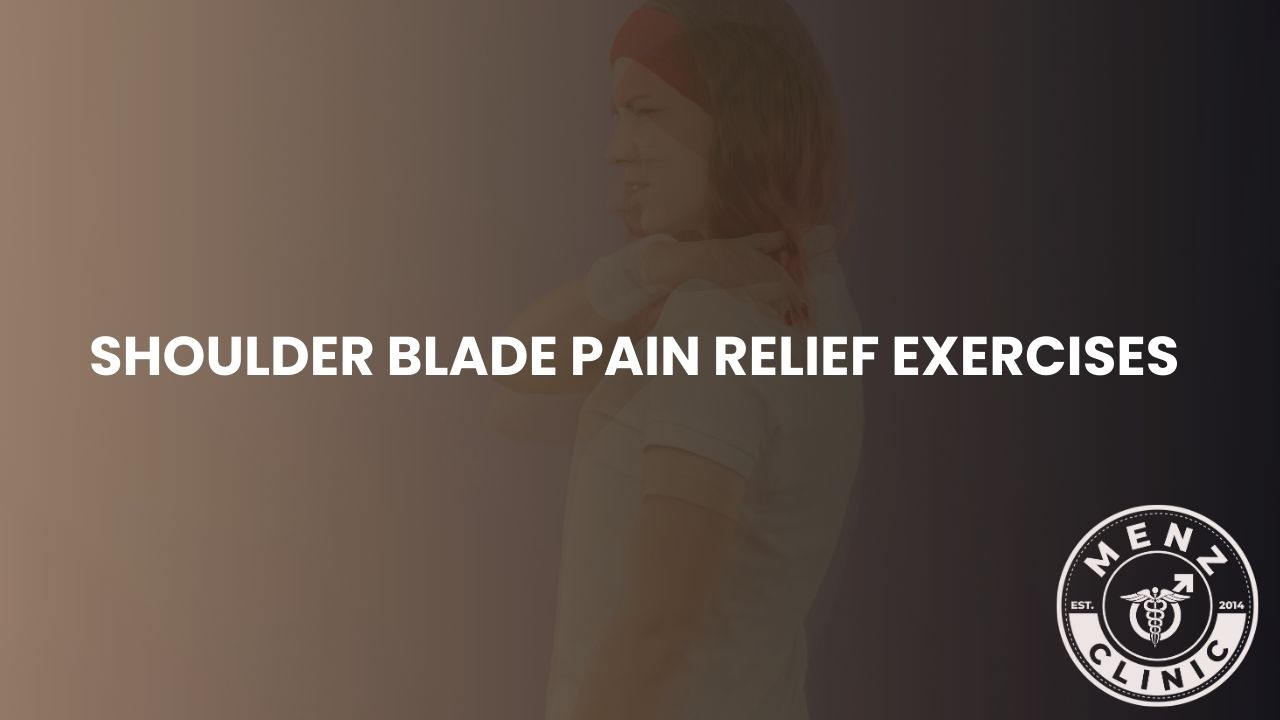
Shoulder blade pain relief exercises are highly effective for patients with severe shoulder pain. Whether It is due to aging or any other factor, shoulder pain is a condition that causes severe discomfort and often interferes with once daily life activities. Painkillers are effective, but they do come with some side effects. In such cases exercises will help you stay at ease and also improve your flexibility. Follow the 5 Shoulder blade pain relief exercises we have enlisted in this article for your instant relief. What Is The Shoulder Blade Pain? The scapula, commonly referred to as the shoulder blade, is a trapezoidal bone located at the back of the shoulder and shaped accordingly. Therefore, as it extends from the collarbone (clavicle) to the upper arm bone (humerus), this muscle plays a crucial role in shoulder mobility and stability. Given its wide range of motion, the scapula serves as an origin point for numerous muscles. Due to its functions and position, it may occasionally be susceptible to injury, strain, or stress, which can lead to discomfort or pain. Maintaining shoulder blade pain relief exercises depends on proper activity and posture. Causes of Shoulder blade Pain Top 5 Shoulder Blade Pain Relief Exercises 1. Press the shoulder blade. Simple exercises that strengthen the supporting muscles can greatly assist in alleviating shoulder blade discomfort. Allow me to present five exercises tailored for beginners: Target group of muscles: trapezius, upper back, rhomboids. Thus, by targeting the upper back muscles and enhancing posture, this exercise alleviates strain on the shoulder blades. 2. Wall angels. Target group of muscles: rotator cuff, upper back muscles, shoulder stabilizer. Wall angels help to relieve tension in the shoulder blades, enhance the range of motion in the shoulder, and strengthen the muscles that support posture. 3. Upper Trapezius Length variations. Target group of muscles: neck area, upper trapezius, middle shoulder. This shoulder blade pain relief exercises lengthens the muscles, relieves shoulder blade pain, and diminishes tension and strain in the upper trapezius muscles. 4. Cats Cow stretch Target Points: spinal muscles, upper back, shoulders. Engaging in this exercise enhances spine flexibility and alleviates tension in the upper back and shoulders. 5. Thor completed the stretch Target Points: Thoracic spine, shoulders, and chest muscles. By expanding the chest and enhancing the motion range of the thoracic spine, this exercise thus aids in reducing strain on the shoulder blades. Final Verdict: Shoulder blade pain relief exercises help in minimising the discomfort. It also allows patients to carry on their regular life activities without any hassle. No matter how effective these exercises are, there is always a probability of seeking professional treatment. At Menz Clinic we not only specialise in men’s sexual health but also work on their overall well-being. Get your blood works done and schedule an appointment with our healthcare specialist to attain the best Shoulder blade pain relief exercises regimens.
HRT Side Effects Men Should Know
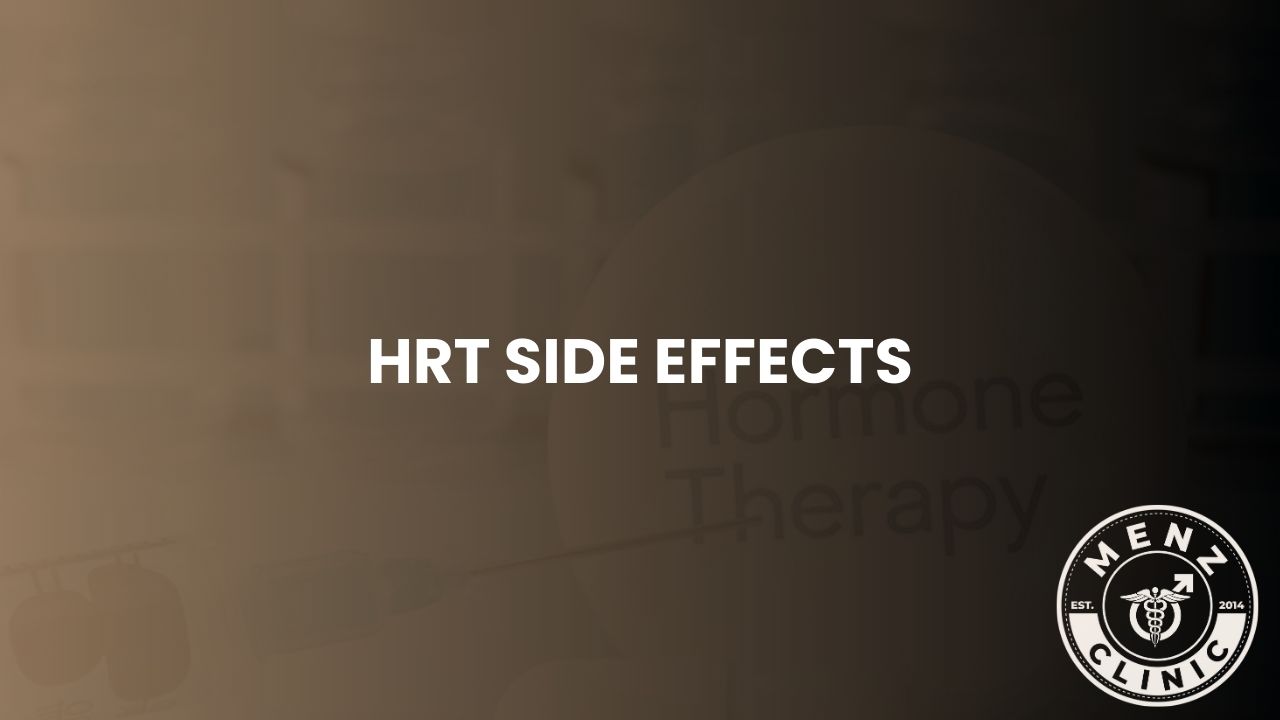
HRT side effects are no joke and are for real. Despite having multiple benefits HRT does come with certain side effects that need to be monitored and controlled on time. Many men suffer from HRT adverse effects without knowing the hazards it can lead to. In this article we will enlist the 7 HRT side effects that men should know and how male sexual experts can aid in identifying these adverse reactions. What is Hormone Replacement Therapy (HRT) in Men Hormone replacement therapy (HRT) is a medical intervention that replaces hormones in people with insufficient natural levels. HRT, usually referring to testosterone replacement therapy (TRT) in men, helps to revive low testosterone levels caused by age or underlying diseases like hypogonadism. . Among all the hormones, testosterone is an important hormone that controls bone density, libido, mood, energy levels, muscle mass, and fat distribution. Men’s natural testosterone levels gradually fall with age, often causing low testosterone signs that can significantly degrade quality of living. By restoring hormone levels to an adequate range, HRT seeks to mitigate these effects. It is delivered through Injections, gels, patches, or implantable pellets. Before starting the therapy, it is important to understand the possible HRT side effects and hazards of HRT although it can offer significant benefits. 7 HRT Side Effects In Men Although HRT benefits make HRT an attractive option, there is danger involved. Men undergoing HRT should expect some of the most prevalent side effects discussed below. 1. Sexual Dysfunction Some men experience temporary erectile dysfunction, reduced sperm production, and testicular shrinkage. Even though HRT is often used to improve sexual drive and penile function, sexual dysfunction may occur. External testosterone can cause this effect by altering the chemical balance of the body, eventually disturbing the normal testosterone and sperm output. 2. Hot flashes and hyperhidrosis: Some men say they have hot flashes and excessive perspiration episodes.However, it is not like those women take HRT for menopause. Hormonal changes, especially at the start of treatment, are said to be responsible for this reaction. 3. A significant Breast Enhancement ( Gynecomastia); In some men, estrogen development of breast tissue (gynecomastia) results from testosterone conversion. This condition might need more treatment, including surgery or medication, and can result in unwanted swelling. 4. Fluid Retention and Instant Weight Gain: Some men see a rise in body fat and water retention, which often causes bloating. This could be caused by hormonal changes impacting sodium retention and metabolism. Changing dose or diet will help one to control this problem and avoid HRT side effects. 5. Fatigue and mood swings As The Most Common Hrt Side Effect Although many men say they have more energy with HRT, others might face mood changes, tiredness, irritability, or depression symptoms. In some cases testosterone levels fluctuate too much if the body needs time to regulate to the new therapy and can be count as HRT side effects. 6. Polycythemia Leads To Higher Risk Of Blood Clotting HRT can raise red blood cell creation, therefore increasing blood viscosity and hence increasing the probability of strokes, heart attacks, and clots. To help lessen these hazards, consistent blood tests are absolutely needed for tracking hematocrit levels and hemoglobin. 7. Problems With Prostate gland and CVD Male sexual experts often suspect testosterone treatment increases prostate cancer, prostate enlargement and even cardiovascular disease risk. To avoid any such HRT side effects men should go for proper investigations. Men getting HRT must undergo normal prostate screenings and heart disease checks. Indications of HRT in Males HRT is most commonly used to treat age- or disease-related testosterone loss. Still, it serves many other uses, including: Final Decision For men with testosterone shortage in the body, Hormone Replacement Therapy (HRT) can significantly improve quality of life. The benefits are evident from higher energy levels to better muscle mass and sexual ability. However, this is not a viable solution for everyone and has its own HRT side effects. Men should see medical experts to assess the potential benefits and risks of HRT before starting it. Our MENZ CLINIC focuses on personalized testosterone therapy intended to improve hormone balance and reduce HRT side effects. Schedule a consultation now at MENZ CLINIC so our experts can help you to recover if you are suffering from low energy, weight increase, or decreased libido.
What Causes Sexual Attraction? A Deep Dive into the Science and Psychology

Sexual attraction is an integral part of human relationships, and one of the most complex and intriguing of all. Have you ever wondered what causes sexual attraction, Why is one person completely indifferent to certain people but irresistibly drawn toward others? The answer lies within a remarkably varied blend of biology, psychology and socialization, as recent works in the field have discovered. We explore in this blog the various facets of what causes sexual attraction. You may come away knowing a bit more about what makes sparks fly between two people. Facets of What Causes Sexual Attraction 1. The Role Sexual Attraction Hormones are obviously one of the largest biological aspects affecting sexual taste. Testosterone and estrogen are in charge of regulating that basic attraction level. Men with increased testosterone levels possess more self-confidence and assertiveness, traits which can be seen as attractive. The same is true for women aided by estrogen. It strengthens physical characteristics that are usually thought of as associated with fertility and life, such as clear skin or symmetrical facial features what causes sexual attraction. As well as visual contact or voice, pheromones are a crucial part of voicing your sexual preferences. And those scent cues send out invisible messages about species preference and reproduction status. According to the research, people often feel like meeting with others who have different major histocompatibility complex (MHC) genes. This will produce more healthy offspring, a study has shown. Taking an evolutionary perspective, humans tend to find symmetrical faces more attractive. Symmetry is often associated with good health and strong genetics, which are key factors in determining physical attraction. Other physical traits related to biological signals of fertility and strength include hip-to-waist ratio in women and broad shoulders in men. 2. Psychological Factors Influencing Sexual Attraction According to psychologists, we are probably more attracted to those who have the same interests, values and beliefs. This phenomenon is popularly known as the similarity-attraction effect. Morris says it occasionally happens that people become more familiar with others entirely because we saw them often enough to become fond of them. He calls this the mere exposure effect, that is what causes sexual attraction. Guarantees everyone will find you attractive. One who is confident in himself is also freer than those around him around the world. Consequently, people are naturally more drawn to him. Relationship-men are in demand. These beautiful creatures with their promising futures still ahead may seem most worthy of nurture. While physical appearance can give you a first impression, personality is what really counts for long-term love. Inflected as a result of anything from kindness to humor and intelligence will add to a person’s attractiveness to particular scales. 3. Emotional and Psychological Connection Not limited to the appearance itself, emotional connection is the solid foundation of sustained attraction. When expressed together, consistent conversations, shared memories, and laughter deepen love. Looking for a healthy relationship filled with trust and warmth based on a good emotional foundation. Relationships where a person has some level of emotional compatibility tend to be more rewarding and long-lasting. Neurotransmitters such as dopamine and oxytocin have an influence on attraction. When dopamine stimulates the pleasure and excitement center in your brain, oxytocin is released to foster emotional attachment. These chemicals are the reason why people feel so euphoric and connected to others when they are in love. And in fact, they seem to be indispensable for attraction’s ability to generate lasting connections. When we are faced with the unknown we are more excited and intrigued. Such an atmosphere of spontaneous challenge or mystery brings a sense of joy to our lives. It adds color to what might otherwise be seen as drab. Many people who have some element of mystery are considered to be interesting. This unpredictability is an attraction and therefore makes people stay interested longer. 4. Evolutionary Perspectives on Sexual Attraction Evolutionary psychology asserts that the capacity of organisms to live and reproduce gives certain characteristics sexual appeal and search clues. by the same token, guys tend to go for younger women while girls seek out older blokes who are more resourceful and in good shape. These preferences are based on genetic rewards obtained from fine progeny attracted as such. Wildness. As for women being particular, their much greater reproductive investment compels them to pick and choose with all the caution imaginable. One has to be discriminating in selecting mates for the quite demanding tasks of pregnancy and child-rearing. Men, however, have their own concerns. In general, their attraction patterns reflect evolutionary strategies which aim to increase genetic diversity. 5. Modern-Day Influences on Sexual Attraction In the digital age, what causes sexual attraction, your online presence can greatly affect attraction. However, interesting contents, beautiful profile pictures, confident posts and so on are enough to help the attractiveness soars. A person’s character is brought out through these channels. Social media has changed how to be attracted by opening up again new spaces where though an individual can display his abilities. Today, online dating has redefined how people behave in love affairs, what causes sexual attraction. With access to more potential partners, digital presence and communication skills have become key. Profiles, text exchanges, and online behaviors now shape attraction. The psychology of dating has been changed as digital makes people interact differently. Conclusion There’s no single answer to “what causes sexual attraction” as attraction itself is influenced by biological, psychological and social factors all working together. Though physical appearance may draw the eye initially, emotional content, character traits and shared values hold an attraction for much longer. Grasping this truth helps nurture deep relationships. Attraction goes beyond appearances. Confidence, compatibility and commitment are all long-term ties. And being aware of these points only adds to our potential to multiply fulfillment in human relationships.
Brazil Nuts Testosterone
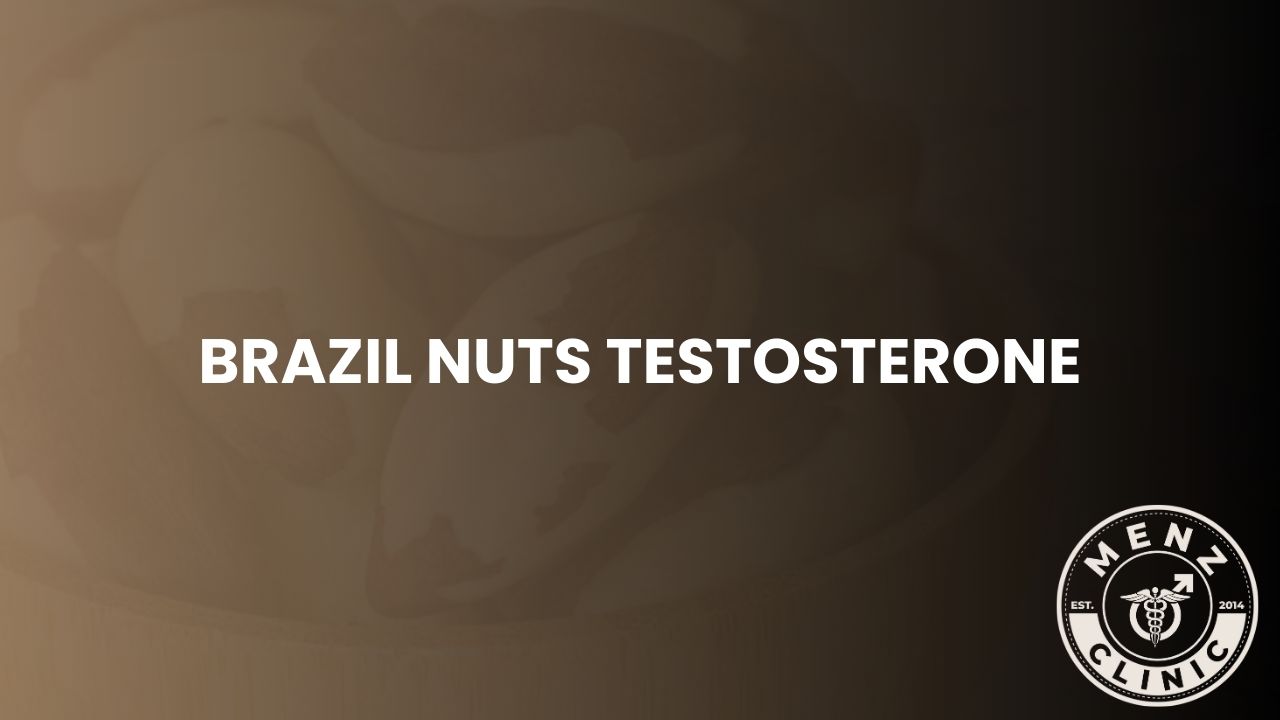
Brazil nuts testosterone is a groundbreaking nutritional element men don’t know about. Although their nutritional composition makes them one of the most effective natural foods for men’s health go unnoticed. Brazil nuts are commonly less used as compared to the common kinds of nuts like almonds and walnuts. Rich in important micronutrients and good fats, Brazil nuts are linked to higher levels of male fertility, improved testosterone production, and overall well-being. In this article we will guide you with the nutritional value of Brazil nuts, their ability to raise male hormones, and the top five benefits of Brazil nuts testosterone. What Is The Nutritional Value Of Brazil Nuts? Brazil nuts testosterone are full of important nutrients important for general health. Below is a list of what they contain: Based on their outstanding nutritional value, Brazil nuts testosterone are considered a superfood for men seeking to increase their testosterone levels organically. Top 5 Advantages Of Brazil Nuts Testosterone 1. Normally boost testosterone The main male hormone controlling general energy, muscle development, and libido is testosterone. Because of their great selenium content, Brazil nuts help to boost testosterone levels. Men who eat just 1-2 Brazil nuts testosterone daily can help naturally maintain ideal testosterone levels. 2. Better Fertility and Sperm Quality Sperm vitality is dependent on zinc as well as selenium. Where zinc helps with sperm production, selenium has been shown to improve sperm motility and general quality. Research also showed that low sperm have been linked with low selenium. Including Brazil nuts in one’s diet could compete with the deficiency of selenium and zinc and eventually help with males trying to have a baby. 3. Better working thyroid and metabolism One of the major functions of the thyroid gland is to balance the hormones including the amount of testosterone. Brazil nuts provide the selenium needed to improve normal thyroid function. Sufficiently functioning thyroid is needed for normal hormonal balance, metabolism, and energy production. 4. Anti-inflammatory and antioxidant properties Constant inflammation and oxidative stress can lower testosterone levels and increase the chances of many health conditions. Brazil nuts testosterone are high in antioxidants such vitamin E and selenium, which help lower inflammation and destroy free radicals. Brazil nuts assist in fighting free radicals. This not only helps with testosterone synthesis but also supports general well-being. 5. Promotes Circulation and Heart Health Optimum testosterone performance, muscle development, and sexual health depend on adequate blood circulation. Brazil nuts contain monounsaturated and polyunsaturated fats, which help to lower bad cholesterol (LDL) levels while also boosting good cholesterol (HDL). Better oxygen and nutrient transport aid in good physical performance as well as improved reproductive health results. Do Brazil Nuts Help To Increase Testosterone Levels? Yes! Experts and researchers suggest that male fertility and testosterone production depend on selenium and several other nutrients found in Brazil nuts. More testosterone levels and improved sperm quality have been directly linked to selenium. Manganese and zinc also help in hormone production. Free testosterone levels rise with magnesium, but zinc is essential for sperm production and testosterone synthesis. Brazil nuts offer a great organic way to support healthy hormone levels since they contain all of these vital elements. Add Brazil Nuts To Your Diet Although Brazil nuts offer several benefits, moderation is key. Given their very high selenium level, overconsumption could cause some serious problems. Experts recommend 1-2 Brazil nuts daily to gain the advantages for testosterone without exceeding safe levels. Enjoy Brazil Nuts in these ways: Experts Opinion On Brazilian Nuts Experts, Including urologists and nutritionists, often advise natural food sources as a means of increasing testosterone levels. Their high selenium content makes brazil nuts particularly potent sources. Selenium deficiency is one of the most common reasons for lower testosterone levels and reduced sperm quality according to our expert at Menz Clinic, is a major drawback for fertility. As a major plan for hormonal health, they advise a sensible intake of Brazil nuts. Brazil nuts provide a natural, effective way to raise selenium levels, thereby directly assisting testosterone production. Still, one has to eat these in small amounts to prevent toxicity. Get Sexual Advice from Experts at Menz Clinic Brazil nuts testosterone is a strong superfood that helps men to naturally increase their testosterone levels, improve fertility, support thyroid health, and support general health. Brazil nuts when taken mindfully can help men undergo significant physical and hormonal changes with only a small serving. Adding Brazil nuts to your diet regularly as long as you improve your testosterone levels and general health. For more such advice on nutritional and sexual health, reach out to our specialist at Menz Clinic today!
Low-Level Laser Therapy Hair Side Effects
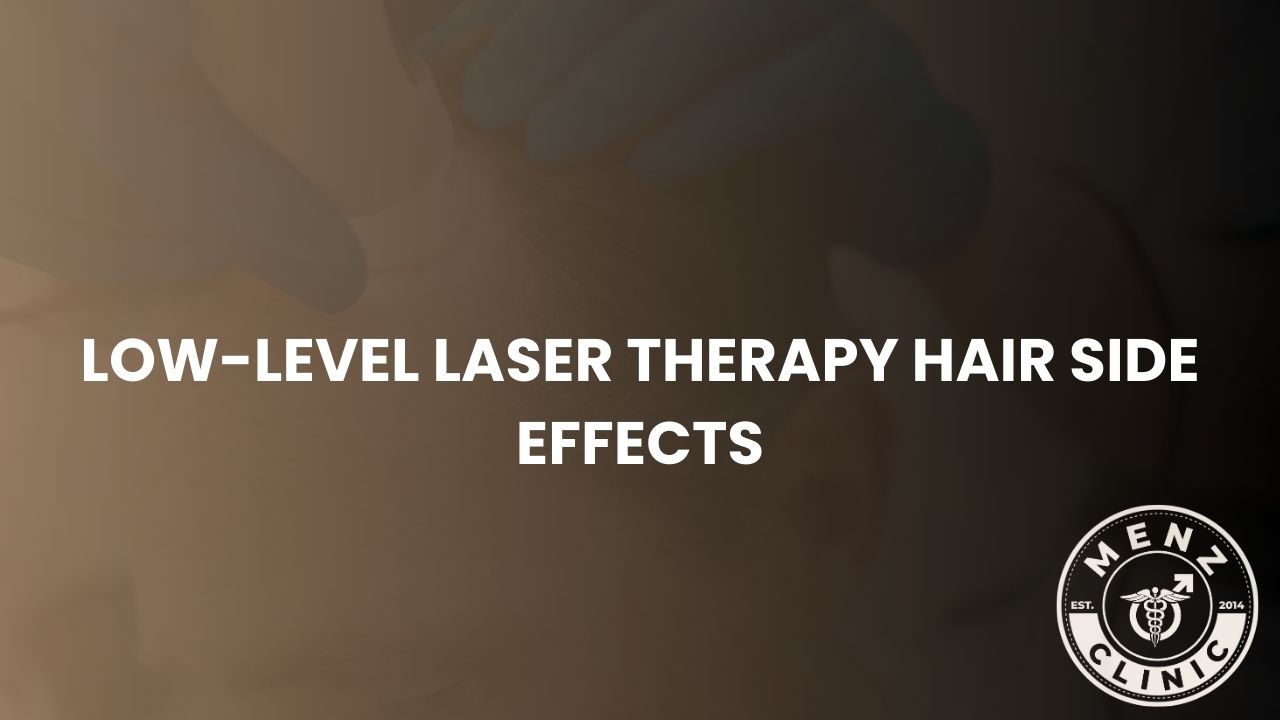
There are reasons why Low-Level Laser Therapy Hair Side Effects Treatment has grown in status as a non-invasive means for combating hair loss. This technique has been widely applied for hair regrowth as well as with respect to nourishing hair follicles. Yet don’t jump onto the LLLT bandwagon just yet: it’s important to know its potential side effects. Although the procedure is generally thought safe, some users have mild to moderate side effects. In this blog, we will go into the potential side effects of low-level laser therapy hair treatment; the medical complications involved and what important precautions one should take before receiving such treatment. 7 Potential Side Effects of Low-Level Laser Therapy for Hair 1. Scalp Irritation and Redness The commonest side effect reported for Low-Level Laser Therapy Hair Side Effects is an irritation of the scalp an a typical reaction can cause redness, itching or discomfort within treated areas. Among some users, this response is mild and brief it fades within hours or perhaps days however, people with sensitive skin and other scalp problems beforehand may find they are affected more than others If the redness continues, one should cut down how frequently low-level laser therapy hair side effects treatments are given in order to see whether conditions improve or seek a solution from dermatology experts. To minimize the scalp congestion after a laser treatment, follow the manufacturer’s instructions and avoid prolonged exposure. Users may find it helpful to use soothing scalp treatments like aloe vera gel and cooling hair or skin lotion to reduce fever. Ensuring that your scalp is well before treatment can also help clear up irritation due to dirt and product build up. 2. Increased Hair Shedding Some people may notice an initial surge in hair loss when they first start low-level laser therapy hair side effects. This is due to the phenomenon commonly referred to as the ‘shedding phase,’ where weaker and damaged hairs are being expelled from the scalp to make way for new growth. Though it may seem alarming, this phase is only temporary and lasts a few weeks at most. Hair shedding is a normal part of hair growth, and shouldn’t be taken as LLLT not working. The tendency in the majority of cases is that hair loss diminishes after prolonged use and higher density can be obtained. But if after several months hair fall continues to be a problem, it’s best to call a trichology’s or dermatologist in order to evaluate whether low-level laser therapy hair side effects for your hair type. 3. Headache or Discomfort Using laser therapy devices for longer periods sometimes leads to cold or mild headache, but that may just be a feeling of discomfort. The main cause of treatment–related headache will, however likely come from heat Gen-“ Adjustment in treatment duration and intensity of laser radiation used may help to reduce these phenomena. If you take breaks between treatments or use your device less frequently, headaches should go away. Proper hydration and maintaining a good posture during the treatments can also help you control discomfort if it arises. 4. Dry or Oily Scalp A change in the scalp health is the case for some after carrying out LLLT. New hair-growth pills could cause your scalp to be too dry or produce even more oil. This will unbalance its health. Proper scalp care, such as using milder shampoos, and occasionally treating it with moisture, can keep things under control. At the same time as you take in natural foods that contain vitamins and minerals necessary for hair health, your scalp will be hydrated and not dry or unbalanced with oil. If the scalp is dry, it is likely to be scurfy or peeling. This is uncomfortable for people who are prone to scalp problems. Conversely the excessive oil will clog up hair follicles and even lead to scalp acne. Keep an eye on the condition of your scalp, change your hair care habits accordingly in an effort to maintain a balanced Advisor. 5. Allergic Reactions Although rare, a skin test may reveal a reaction to the laser therapy especially those on sensitive skin parts. If you experience any symptoms such as swelling and itching –or even just a rash seek medical attention immediately! If you suspect an allergic reaction, stop use and see a dermatologist for advice. Before beginning full laser treatments, doing a patch test can help anticipate any kind of allergic reactions and avoid consequences. Individuals who have a history of allergy or skin sensitivity should be more careful before undergoing LLLT. If necessary, ask a doctor whether this is suitable for your skin type. 6. Eye Sensitivity and Strain When laser light is directed straight at the eyes, people feel pain and fatigue is the result. Almost all low-level laser therapy hair side effects appliances are accompanied by safety notices warning against eye exposure. During the period of treatment, when you wear the necessary protective glasses or shut your eyes, this avoids potential dangers. If you feel your eyes becoming irritated, dimming the device (if it is adjustable) or slightly moving it further away from the scalp can help you feel more comfortable. People who spend many hours staring at computer screens may find themselves particularly at risk of eye irritation. LLLT sessions work best as a preventative measure and should therefore be conducted at times when your eyes are less tired and soren the morning or after time off from light source usage. 7. Dizziness or Lightheadedness After using LLLT equipment, people sometimes have one of two unfortunate experiences: like feeling they are about to faint or dizzy. This might be because of high sensitivity to the red light, and the resulting increased blood circulation in the scalp. If you do experience When You Become Dizzy consider reducing how long you keep following the protocol for and if it persists after a medical evaluation. Sitting or lying during treatments, ensuring good ventilation and air flow in the room will all
